
Topics
Guests
- Robert Burnleyformer director of Virginia’s Department of Environmental Quality, now an environmental consultant to the statewide coalition, Keep the Ban.
Links
Virginia residents are organizing against a push by the nuclear industry to lift a three-decade-long ban on uranium mining. The ban went unchallenged until recently, when the cost of uranium began to rise. Virginia residents have expressed concern about the dangers uranium mining poses to drinking water, air quality, farm products, fishing and tourism. They say allowing mining of the one uranium deposit already identified would open the door for exploration of other sites across the state. Almost all of Virginia’s major cities have passed resolutions to oppose lifting the ban. We’re joined by the former director of Virginia’s Department of Environmental Quality, Robert Burnley, now an environmental consultant to the statewide coalition, Keep the Ban. [includes rush transcript]
Transcript
AMY GOODMAN: And we stay right here in Virginia as we turn to a major effort now underway to lift the state’s three-decade-long ban on uranium mining. The ban was first put in place after tests showed a Pittsylvania uranium deposit beneath the small town of Chatham in the southern part of the state could contain about 119 million pounds of the radioactive mineral, which is used to supply nuclear power plants. Studies also showed that mining the site would generate about 29 tons of waste, which could endanger life in the region for centuries.
Well, the ban went unchallenged until recently, when the cost of uranium began to rise. Now the company that owns the deposit wants to develop it. During the lead-up to a failed effort to lift the ban in the 2012 legislative cycle, Virginia Uranium, Inc., spent at least $300,000 lobbying lawmakers. As the state prepares to consider the ban again in its next session, mining advocates have also funded TV ads like this one.
VIRGINIAENERGY.ORG AD: It seems like everywhere you look, there’s an old factory or mill where people used to work. You know, developing our own energy resources will create hundreds of good-paying jobs in Southside. We’ve got the skills. We’ve got the workers. All we need is a chance to work. Uranium mining is done safely around the world. If it can be done safely in Virginia, I’m for it, because we need the jobs
AMY GOODMAN: But many Virginia residents have expressed concern about the dangers uranium mining poses to drinking water, air quality, farm products, fishing and tourism. They’re saying that allowing mining of one of the uranium deposits already identified, Virginia uranium deposits, opens the door for exploration of other sites across the state. Now, almost all of Virginia’s major cities have passed resolutions to oppose lifting the ban.
Well, for more, we’re joined by the former director of the Virginia Department of Environmental Quality, Robert Burnley. He served 32 years in the Virginia government, now an environmental consultant to the statewide coalition, Keep the Ban. He’s also an adviser to the Alliance for Progress in Southern Virginia.
Robert Burnley, welcome to Democracy Now! For viewers and listeners around this country and around the world, talk about the significance of what you’re dealing with here in Virginia.
ROBERT BURNLEY: What’s going on here in Virginia, Amy, is an experiment. Uranium has never been mined and never been processed in this part of the country before. It’s always been done in the arid southwestern part of the country, where it doesn’t rain and there are no people. In Virginia—
AMY GOODMAN: Well, there are fewer people.
ROBERT BURNLEY: There are fewer people. In Virginia, the opposite is true. We get over 40 inches of rain—excuse me. We’re subject to severe weather events. Hurricanes are very common. We have tornadoes on a regular basis. And we experienced a level 6 earthquake last year for the first time in a long time. We were told in the past that Virginia didn’t have earthquakes. So, this has never been done in that type of environment before, in a wet environment. And there are a lot of people that depend on water for drinking and other uses.
AMY GOODMAN: Why are you concerned that—and what is Virginia Uranium? What is this company?
ROBERT BURNLEY: Virginia Uranium is a—it was founded by the owner of this uranium deposit in Pittsylvania County. There’s been some corporate structure changes recently, and I can’t really describe exactly everything that’s going on. But it’s—Virginia Uranium is mostly owned by Canadian companies that have some familiarity with uranium mining and processing. Of course, no one in Virginia does, because it’s never been done before.
AMY GOODMAN: And your concern about uranium mining, exactly what effect it would have?
ROBERT BURNLEY: What’s going to happen, if uranium is mined, and especially if uranium is processed in Virginia, there are a huge amount of waste that’s generated. When uranium—when the uranium, the yellowcake, is taken and marketed, 85 percent of the radioactivity remains in the waste products. Those products are just—are buried, and they’re buried in facilities very much like we store municipal solid waste: hole in the ground, plastic liner, fill it up with this toxic, radioactive waste, cover it over for thousands of years, and hope nothing happens. We have, as I said, a lot of rain and severe weather in Virginia. And to think that these facilities would withstand those types of stresses is just ludicrous.
AMY GOODMAN: I wanted to play a comment from the Greenpeace co-founder, Patrick Moore, who supports lifting the ban on uranium mining in Virginia. In recent years, Moore has been paid by the nuclear industry to promote the expansion of nuclear power. In 2011, he spoke before a National Academy of Sciences panel studying the future of uranium mining in Virginia.
PATRICK MOORE: A sensible environmentalist would support uranium mining in Virginia, so long as it adopts best environmental practices, including water management, waste management and ecological restoration. I, with my colleagues, have visited mining operations, including uranium-mining operations, around the world, in Southeast Asia, Africa, in South America, all through North America and Europe. And we have seen the changes that have occurred with the concept of sustainable development and ecological restoration over the past 30 years. I’ve been in the environmental movement for 40 years myself. Tremendous strides have been made in improving all aspects.
AMY GOODMAN: I want to also play a comment by Virginia Beach Department of Utilities Director Tom Leahy, who argues against lifting Virginia’s moratorium on uranium mining.
THOMAS LEAHY: Our concern, of course, is quite large—release of tailings during some kind of catastrophic storm. The location of this mine, as well as other possible future mines, are upstream of at least six water supply intakes, from Halifax down to Roanoke Rapids, North Carolina. And they happen to be located in a part of the state and a part of the country that’s susceptible to significant precipitation events, not just hurricanes but things we call probable maximum precipitation, 30 inches of rain in six hours. There have been two storms like this in 40 years in Virginia directly east of the Blue Ridge Mountains and basically in a straight line in a path with this proposed mine. We admit that that—we’re modeling and looking at an unlikely scenario, but risk probability times consequence, and probability of an event might be small, but if the consequence is great, it might be an unacceptable risk.
AMY GOODMAN: Bob Burnley, your final comments? Patrick Moore saying that, I mean, the uranium mining has become much more advanced in the last 30 years, since the moratorium was imposed here.
ROBERT BURNLEY: Right. The fact of the matter is, it’s never been done in a positive water balance area before, in a wet environment. It’s an experiment. We don’t know how to regulate it. We don’t know how to design the facilities. And we don’t know how to manage the wastes.
AMY GOODMAN: Well, I want to thank you very much for being with us. Bob Burnley is former director of Virginia’s Department of Environmental Quality. He served 32 years in the Virginia government, now an environmental consultant to the statewide coalition, Keep the Ban.
And that does it for our broadcast, as we continue our 100-city tour. Tune in on Wednesday night for our special coverage of the first presidential debate. As President Barack Obama and Republican nominee Mitt Romney square off, Democracy Now! will broadcast live from Denver with a special expanded presidential debate. We’ll air the debate, pausing after Jim Lehrer’s questions and the answers of the candidates to include responses from our live guests who will be standing in Denver, from two presidential contenders who have been shut out of the official debate: Jill Stein of the Green Party, Rocky Anderson of the Justice Party. That’s Wednesday night, or you can watch our broadcast in person in Denver. But that’s all coming up on Wednesday night. We’ll begin our broadcast at 8:30 Eastern time. We’ll be at the Central Presbyterian Church at 1660 Sherman Street in Denver.
Our Election 2012 Silenced Majority tour continues tonight at 7:00 p.m. at Virginia Tech in Blacksburg, Virginia. Tuesday night I’ll be at the Unity Church in Boulder, Colorado, 7:00 p.m.; on Thursday night at the Tim Gill Center for Public Media in Colorado Springs. And then, this weekend the Colorado leg of the tour continues with stops in Salida, Carbondale, Paonia, Crested Butte, Telluride and Durango. Check out details of the tour at tour.democracynow.org. We’ll continue in New Mexico and Arizona, California and New York.

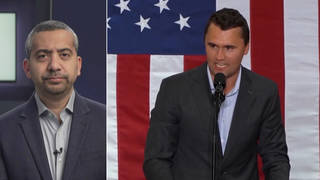
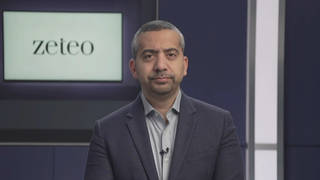
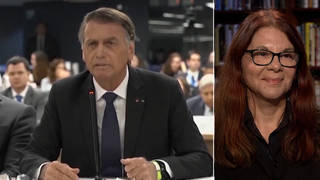
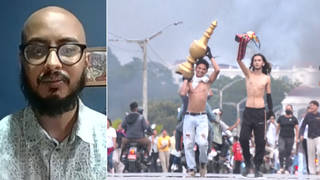
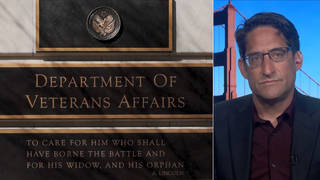
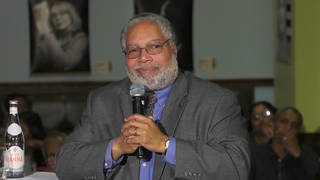

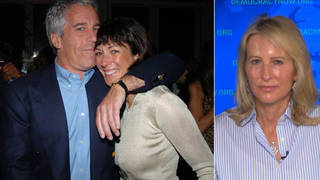

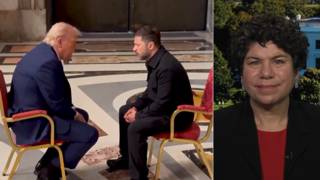
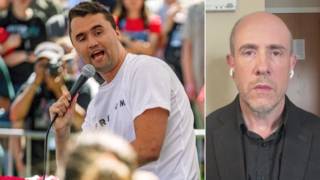
Media Options